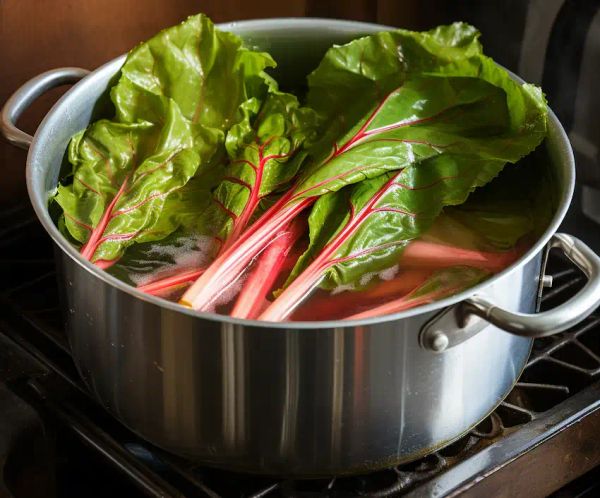Rhubarb is a plant that we mostly appreciate for its tart, edible stalks. But did you know that its large leaves can be resourcefully used around the home and garden? Even though they are inedible due to their high oxalic acid content, they have several practical and eco-friendly applications. In this article, we will explore six innovative ways to utilize rhubarb leaves safely and effectively.

1. Natural Pest Repellent
If you’re struggling with pests like aphids and cabbage worms in your garden, rhubarb leaves can serve as an excellent organic pest repellent. Here’s how you can make your homemade repellent:
 Boil Leaves: Start by simmering a few rhubarb leaves in water for about 20 minutes.
Boil Leaves: Start by simmering a few rhubarb leaves in water for about 20 minutes.- Cool and Strain: Let the mixture cool down and strain the liquid.
- Dilute and Spray: Dilute the rhubarb liquid with water (one part rhubarb liquid to three parts water) and use it as a spray on affected plants.
2. Compost Accelerator
Rhubarb leaves contain a high amount of nitrogen, which makes them an excellent addition to your compost pile. They help accelerate the decomposition process, turning your organic waste into rich compost. Follow these simple steps:
- Chop Leaves: Cut the leaves into smaller pieces for easier breakdown.
- Mix with Compost: Add the chopped leaves to your compost bin, balancing them with carbon-rich materials like dry leaves or newspaper.
3. Weed Control Mulch
Tired of battling pesky weeds in your garden? Rhubarb leaves can act as a natural and biodegradable mulch to suppress weed growth. Here’s what you need to do:
- Spread Leaves: Lay whole or chopped rhubarb leaves around your plants, creating a protective layer.
- Water: Make sure to water the leaves to help them break down and form a barrier against weeds.
4. Cleaning Agent for Pots and Pans
Thanks to the acidic nature of rhubarb leaves, they can be used as a natural cleaning agent for pots and pans. It’s particularly effective in removing stubborn burnt residue. Here’s how:
- Boil Leaves in Pot: Place a few rhubarb leaves in a pot with water and bring it to a boil.
- Scrub: After boiling for a few minutes, use the mixture to scrub the pot and remove tough stains.
5. Natural Dye
If you’re into crafts or want to give a unique touch to your fabrics, rhubarb leaves can be used to create a natural dye. Follow these steps:
- Boil Leaves: Simmer rhubarb leaves in water to extract the dye.
- Strain and Use: After boiling, strain the liquid and use it as a dye for fabrics or in your craft projects.
6. Plant Health Check
Rhubarb leaves can also serve as an indicator of your soil’s health. Their fast decomposition rate suggests healthy soil microbial activity. Here’s how you can conduct a plant health check:

- Observe Decomposition: Simply place a rhubarb leaf in the soil and monitor how quickly it breaks down. Faster breakdown implies a healthy microbial ecosystem in your soil.
Safety Precautions
While using rhubarb leaves, it’s important to remember that they contain oxalic acid, which can be toxic if ingested. Always make sure to use gloves when handling them and avoid any situations where they could be mistakenly ingested by humans or animals.
Rhubarb leaves, often discarded as waste, offer a multitude of eco-friendly solutions for your home and garden. From being a natural pest repellent to accelerating your composting process, these leaves can become an invaluable resource for any gardener or homeowner looking to embrace sustainability. Just remember to handle them with care and enjoy the benefits of this versatile plant!




